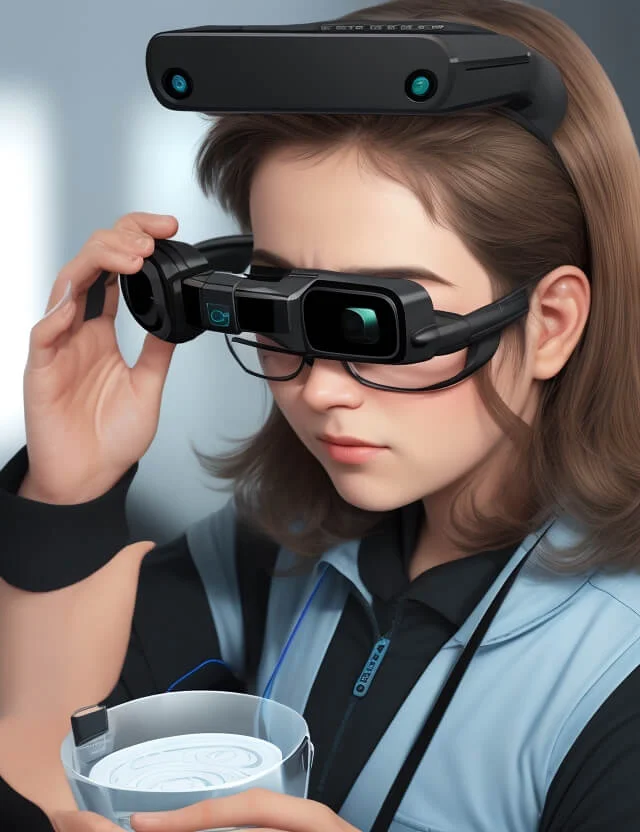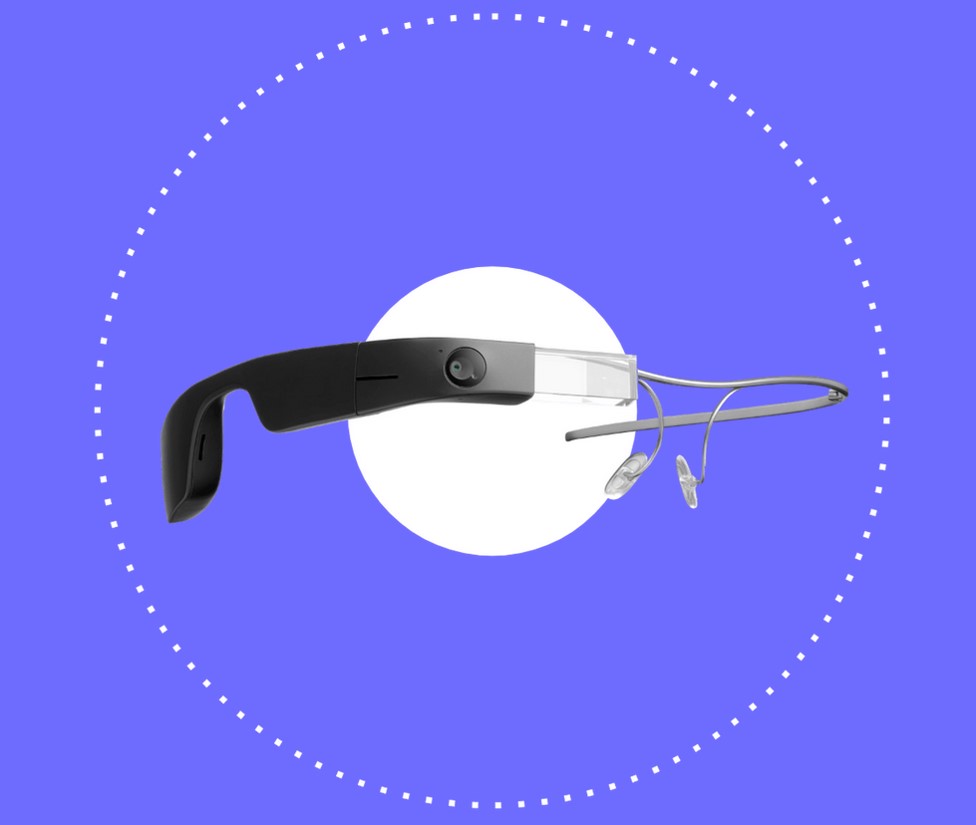Wearable Technology for Low Vision: Transforming How We Navigate the World
Wearable Technology for Low Vision: Transforming How We Navigate the World
Blog Article
Enhancing Accessibility With Assistive Technology for the Blind
The combination of assistive technology for the blind represents a critical development in access, basically modifying exactly how people browse their environments and engage with culture. From display visitors to innovative wise canes, these tools not just improve freedom but additionally advertise inclusivity in numerous rounds of life. As we explore the diverse kinds of assistive tools and their substantial influence on daily living, it ends up being necessary to analyze how ongoing technological innovations are reshaping the landscape of assistance for the blind neighborhood. What implications do these advancements hold for the future of availability?
Overview of Assistive Technology
Assistive innovation refers to a variety of tools and software application made to enhance the capabilities of people with handicaps, including those that are blind or aesthetically damaged. This innovation plays a vital role in promoting independence and boosting the top quality of life for users. By giving alternate methods for accessing info and doing day-to-day tasks, assistive modern technology equips individuals to navigate their environments better.
The growth and application of assistive innovation embrace a range of principles intended at promoting access. These principles consist of user-centered layout, which focuses on the demands and choices of the person, and the integration of innovation into everyday activities. Such developments guarantee that assistive gadgets are not only functional but also intuitive and very easy to make use of.
In addition, assistive innovation includes a diverse range of solutions, from low-tech choices like magnifiers to sophisticated technologies such as display visitors and Braille screens. The recurring advancement of this area is driven by the requirement to address the distinct challenges encountered by people with aesthetic problems (Wearable technology for low vision). As modern technology remains to breakthrough, the possibility for boosting accessibility and promoting inclusivity stays promising, eventually adding to an extra fair society

Kinds of Assistive Tools
Many types of assistive gadgets are offered to support people that are blind or visually impaired, each developed to deal with details needs and obstacles. These gadgets can be broadly classified into three primary types: low-tech, mid-tech, and sophisticated services.
Low-tech devices include things such as magnifiers, Braille labels, and tactile maps. These are reasonably straightforward tools that improve the user's capacity to interact with their setting without calling for complicated innovation.
Mid-tech gadgets usually involve extra innovative functions, such as electronic magnifiers and mobile Braille note-takers. These devices can provide capabilities like speech result, allowing users to accessibility info a lot more effectively.

Effect on Daily Living
The accessibility of various assistive devices dramatically enhances the quality of life for people that are aesthetically damaged or blind, affecting their everyday living in extensive means. By incorporating innovations such as screen readers, Braille displays, and audio summary solutions into their regimens, customers obtain better autonomy and independence. These devices promote accessibility to information, allowing individuals to carry out everyday tasks, such as reviewing emails, browsing public rooms, and enjoying media content.
Furthermore, assistive tools encourage people to involve more totally in social interactions and neighborhood look at this website activities. The capability to utilize mobile phones equipped with accessibility functions enables smooth communication and connection with others. This connectivity cultivates a feeling of belonging and lowers feelings of seclusion.
In specialist setups, assistive modern technology supports productivity by permitting people to complete work jobs efficiently. Tools like voice recognition software application and specialized zoom devices enable users to participate in the labor force on equal footing with their sighted peers.

Advancements in Modern Technology
Current technological advancements have significantly changed the landscape of tools offered for people who are aesthetically impaired or blind. The combination of synthetic intelligence (AI) and maker understanding has actually offered surge to applications that boost navigating and object acknowledgment. As an example, smartphone applications can currently utilize AI to recognize and explain surroundings in real-time, supplying individuals with valuable contextual info.
In browse around this web-site addition, innovations in haptic modern technology have actually caused the advancement of smart walking sticks geared up with sensing units that identify obstacles and supply responsive feedback. This empowers users to browse their setting with enhanced confidence and self-reliance. Technologies in text-to-speech software program and braille displays have boosted the access of digital content, enabling for smooth communication with numerous media.
Wearable modern technologies, such as smart glasses, are likewise making strides in assisting aesthetic problems. These devices can provide increased reality experiences, superimposing crucial info onto the user's area of sight. Jointly, these innovations not only enhance the top quality of life for people that are blind yet likewise advertise higher incorporation in culture. As modern technology proceeds to advance, the possibility for also more transformative devices stays imminent.
Future Trends and Innovations
As technology quickly proceeds, the future of assistive tools for individuals who are blind holds tremendous assurance. Technologies in expert system (AI) and machine understanding are positioned to transform the method blind individuals connect with their environments. AI-driven applications are being developed to boost things recognition, permitting customers to recognize and browse Continue their environments with better ease and accuracy.
In addition, improvements in haptic comments innovation are making it possible for the production of tactile maps and navigating aids that provide real-time information through touch. These technologies not just enhance movement however likewise foster freedom. Additionally, wearable gadgets outfitted with enhanced fact (AR) attributes are emerging, using users visual information through audio summaries, thereby linking the space between the digital and physical worlds.
Additionally, the assimilation of smart home technology offers new opportunities for access, enabling people to manage their living environments with voice commands or mobile phone applications. As partnership between technology developers and the blind neighborhood proceeds, the emphasis on user-centered design will certainly make certain that future advancements are tailored to fulfill the distinct requirements of this populace (Wearable technology for low vision). The trajectory of assistive technology assures an extra empowering and comprehensive future for individuals who are blind
Verdict
To conclude, assistive innovation plays a critical role in enhancing accessibility for individuals with visual disabilities. The varied variety of devices, including screen readers and smart walking sticks, substantially improves day-to-day living and fosters independence. Constant advancements in modern technology and user-centered design ensure that these tools provide effectively to the one-of-a-kind demands of the blind community. As developments development, enhanced inclusivity and empowerment can be prepared for, eventually improving the high quality of life for those impacted by aesthetic disabilities.
The assimilation of assistive modern technology for the blind stands for a critical advancement in accessibility, essentially changing exactly how individuals browse their environments and involve with culture.Assistive modern technology refers to a range of tools and software program designed to boost the abilities of individuals with impairments, consisting of those that are blind or visually damaged. Wearable technology for low vision.As technology rapidly advances, the future of assistive tools for individuals who are blind holds tremendous guarantee. The trajectory of assistive innovation promises a much more empowering and comprehensive future for individuals who are blind
In conclusion, assistive technology plays a crucial role in enhancing accessibility for people with visual problems.
Report this page